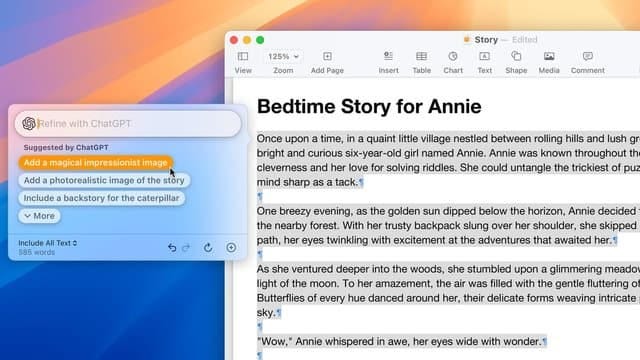Five Things AI: Apple, Apple, Data Centers, Software Engineers, AGI
Wow, it's Friday again! Time to take a look at five articles about AI!
Hi and welcome back to Five Things AI! My name is Nico Lumma and every week I like to share five interesting articles about AI with you. So instead of researching for hours on the web, just read these five articles here and you are all set. As I’m saving you a couple of hours every week, I’d really appreciate it if you could go paid and spend the equivalent of one large café latte on this newsletter.
This week in AI was dominated of course by Apple’s WWDC during which Apple showed what they are planning to do with AI in the near future. AI obviously stands for Apple Intelligence. The other big news is that OpenAI doubled its annual revenues to 3.8 billion dollars, which is still little compared to all the cash needed to build the company, but it’s also more than just some change. The focus obviously is on enterprise customers and rightly so as large companies are trying to reap the benefits AI promises for its business.
So where do we go from here? How will AI be used in the future? How will AI change the way software engineers work? When will we reach AGI and what do we need to build all the data centers?
Read on!
Apple’s AI moment arrives
“The most vexing part of the new Siri, at least as it was shown, is not whether it works but what it can do. The company flashed a few screens of possibilities: add an address to a contact card; show certain very specific photos; “make this photo pop.” But how do you remember to do that in the moment? The invisible interface has always been the problem with voice assistants, and I wonder if Apple is doing enough to address it.” - I’m intrigued by this and hope to try it out soonish.
What Apple's AI Tells Us: Experimental Models⁴
“Every major AI company argues the technology will evolve further and has teased mysterious future additions to their systems. In contrast, what we are seeing from Apple is a clear and practical vision of how AI can help most users, without a lot of effort, today. In doing so, they are hiding much of the power, and quirks, of LLMs from their users. Having companies take many approaches to AI is likely to lead to faster adoption in the long term. And, as companies experiment, we will learn more about which sets of models are correct.” - Ethan Mollick dissects the past development of AI and how Apple takes a different approach.
Generative AI Is Not Going To Build Your Engineering Team For You
This is an amazing and very thoughtful piece that every developer and CTO should read: “AI is not coming to solve all our problems and write all our code for us—and even if it was, it wouldn’t matter. Writing code is but a sliver of what professional software engineers do, and arguably the easiest part. Only we have the context and the credibility to drive the changes we know form the bedrock for great teams and engineering excellence..”
How to Build an AI Data Center
What you probably not know about me: I used to work as a SysAdmin and then as a CTO, so I spent lots of time in the late 90s and the early 2000s in data centers. I always found it fascinating how all these racks of servers would use a ton of electricity and bandwidth to do their computing. Luckily, at least for me, Brian Potter breaks down what an AI data center needs these days.
Situational Awareness: The Decade Ahead
Former OpenAI employee Leopold Aschenbrenner has written a lengthy and thought-provoking essay about the state of AI and discusses its future. He predicts that we will reach Artificial General Intelligence (AGI) by 2027. I guess we will see lots of new data centers until then.
If you missed last week’s edition of Five Things AI, you can read it here:
That’s it for Five Things AI this week! 🤖
— Nico







